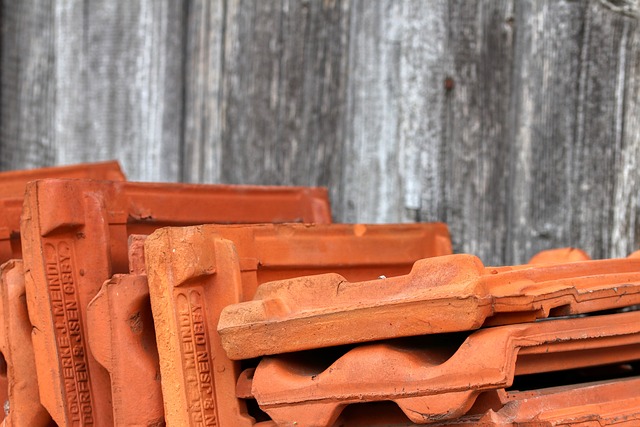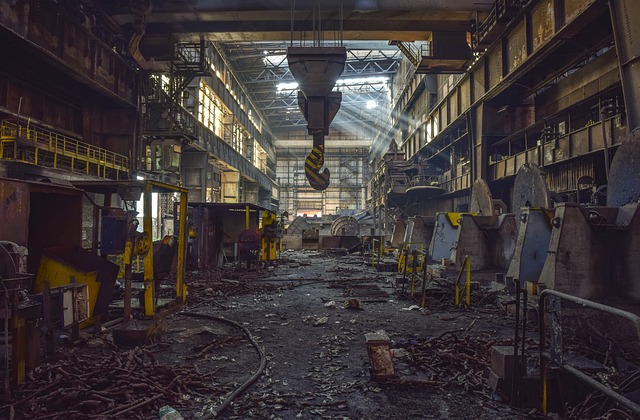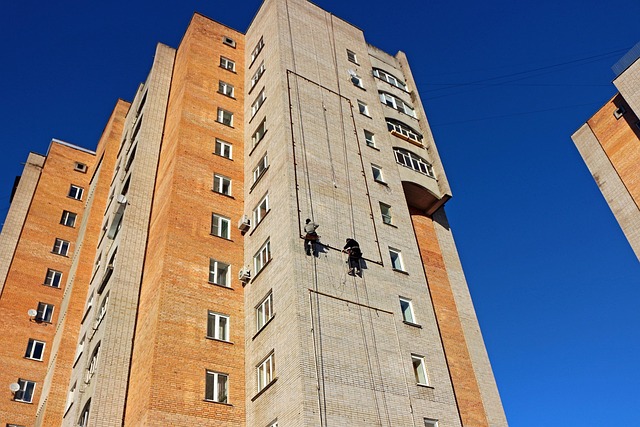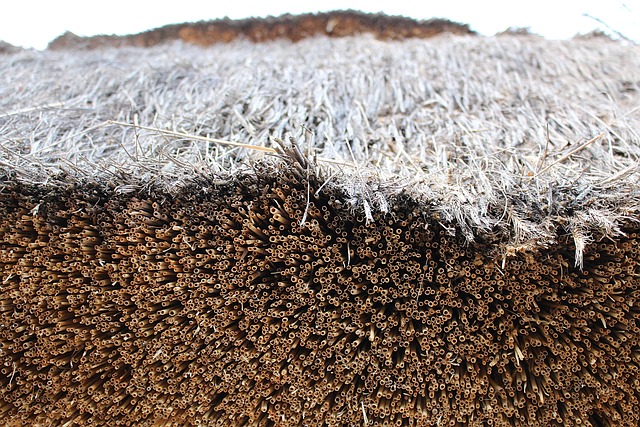Category: Houston Roof Repair
Houston Roof Repair: A Comprehensive Guide
Introduction
In the bustling city of Houston, Texas, a critical aspect of urban infrastructure often goes unnoticed until it demands attention – the roof. Houston Roof Repair is a specialized service that addresses the intricate needs of these overhead structures, ensuring their longevity and functionality. This article aims to provide an in-depth exploration of this vital industry, delving into its various facets, global impact, economic significance, technological innovations, regulatory framework, challenges, and future prospects. By the end, readers will gain a comprehensive understanding of why Houston roof repair is not just a service but a critical component of sustainable urban development.
Understanding Houston Roof Repair
Definition: Houston Roof Repair encompasses the diagnosis, assessment, and restoration of various roofing systems, including residential, commercial, and industrial structures. It involves a multitude of tasks, from fixing minor leaks to replacing entire roofs, all tailored to extend the life and enhance the structural integrity of buildings.
Core Components:
-
Roof Inspection: The initial step involves thorough inspection to identify damage, wear, or potential hazards such as rot, mold, or poor drainage.
-
Repairs and Maintenance: This includes sealing leaks, repairing flashing, replacing missing shingles, or fixing damaged gutters and downspouts. Regular maintenance is key to preventing extensive repairs.
-
Roof Replacement: When damage is severe or a building undergoes significant renovation, a complete roof replacement becomes necessary. This involves removing the old roofing material, installing new underlayment, and placing fresh roofing sheets or shingles.
-
Specialized Techniques: Houston’s diverse climate calls for specialized repairs, such as reinforcing roofs against strong winds, addressing moisture-related issues, and ensuring heat resistance in hot summers.
Historical Context: The evolution of roof repair techniques in Houston mirrors the city’s growth and changing climatic demands. Historically, simple thatch and wood roofs gave way to more durable materials like asphalt shingles and metal roofing in the 20th century. Today, with increasing concerns about energy efficiency and environmental sustainability, green roofing practices are gaining traction.
Global Impact and Trends
Houston Roof Repair is not confined to local boundaries; it influences global construction and renovation trends. Several key international developments shape this industry:
-
Climate Change Adaptation: As extreme weather events become more frequent, the demand for resilient roofing solutions is on the rise worldwide. Houston’s experience with severe storms and hurricanes offers valuable insights into designing roofs capable of withstanding harsh conditions.
-
Sustainable Building Practices: The global push towards sustainable construction has led to increased adoption of eco-friendly roofing materials, such as recycled shingles and energy-efficient underlayments. Houston’s green building initiatives contribute to this trend.
-
Technological Integration: The integration of advanced technologies, like drone inspections and smart sensors for real-time roof monitoring, is transforming the way roof repairs are conducted globally.
Regional Variations: Different regions worldwide have unique roofing preferences and challenges:
| Region | Typical Roofing Materials | Climate Considerations |
|---|---|---|
| North America (including Houston) | Asphalt shingles, metal roofing | Severe storms, high winds, snow loading |
| Europe | Clay tiles, slate, metal | Temperate climates with varying precipitation, historical architectural styles |
| Asia | Tile, thatch, metal | Extreme heat and monsoons, cultural preferences for specific materials |
Economic Considerations
The Houston Roof Repair industry plays a significant role in the local economy and is closely tied to broader economic systems.
-
Market Dynamics: The market fluctuates based on housing trends, construction booms, and weather-related events. According to a recent report by Market Research Future (MRFR), the global roofing repair and maintenance market is projected to reach USD 42.8 billion by 2027, growing at a CAGR of 5.9%.
-
Investment Patterns: Property developers and homeowners invest in roof repairs as a necessary maintenance expense. In Houston, where real estate values are high, roof repairs are often prioritized to maintain property value and curb appeal.
-
Employment Impact: The industry supports numerous jobs, from skilled roofers to inspection specialists and business administrators. According to the US Bureau of Labor Statistics (BLS), roofing workers had a median annual wage of $40,520 in 2020, reflecting the industry’s economic significance.
Technological Advancements
Technological innovations have revolutionized Houston Roof Repair, enhancing efficiency, safety, and quality:
-
Drone Inspection: Drones equipped with high-resolution cameras and thermal imaging can quickly survey large roofs, identifying issues that might go unnoticed during manual inspections. This technology reduces the risk to inspectors and provides faster data collection.
-
Smart Sensors: These sensors monitor roof temperatures, moisture levels, and structural integrity in real time. They alert homeowners and contractors to potential problems, enabling proactive repairs and extending roof life.
-
Enhanced Materials: Newer roofing materials offer improved durability, better insulation properties, and reduced environmental impact. For example, cool roofs made from reflective materials help lower energy costs by minimizing heat absorption.
-
Computer-Aided Design (CAD): CAD software assists in creating detailed plans for roof repairs and replacements, ensuring precision and reducing errors. It also aids in estimating material requirements accurately.
Policy and Regulation
The Houston Roof Repair industry operates within a framework of local, state, and federal regulations designed to ensure safety, quality, and environmental protection:
-
Building Codes: Local building codes dictate minimum standards for roofing materials, construction practices, and safety measures. Houston’s building codes, administered by the Building Safety Division, are regularly updated to reflect new technological advancements and address emerging concerns.
-
Permits and Licenses: Contractors must obtain permits for roof repairs or replacements, ensuring compliance with local regulations. The City of Houston’s Department of Planning and Development issues these permits, conducting inspections at various stages of work.
-
Environmental Regulations: The US Environmental Protection Agency (EPA) enforces rules regarding the disposal of roofing materials containing hazardous substances. Contractors must follow guidelines for proper waste management and recycling.
-
Insurance Requirements: Both contractors and homeowners are required to have insurance to cover potential risks during repairs or replacements. This includes liability coverage, worker’s compensation, and property damage protection.
Challenges and Criticisms
Despite its critical role, the Houston Roof Repair industry faces several challenges:
-
Skilled Labor Shortage: The demand for skilled roofers often exceeds supply, leading to longer project timelines and higher labor costs. Training programs and apprenticeship initiatives are necessary to address this gap.
-
Material Sourcing and Cost Fluctuations: Volatile market conditions can impact the availability and pricing of roofing materials. Contractors must adapt to changing material requirements and budget constraints while ensuring quality.
-
Regulatory Compliance: Navigating a complex web of regulations can be challenging for small contractors. Regular updates on building codes and environmental compliance rules are essential to avoid legal issues and delays.
Solutions and Strategies:
-
Industry Collaboration: Partnerships between contractors, suppliers, and regulatory bodies can foster knowledge sharing and streamline processes.
-
Training Programs: Investing in training helps address the skilled labor shortage and ensures a competent workforce. The Houston-Galveston Area Council’s (H-GAC) job training programs offer valuable resources.
-
Sustainable Material Incentives: Local governments can encourage the use of eco-friendly materials by providing tax incentives or subsidies, as seen in some European cities.
Case Studies: Exemplary Applications
1. The Green Roof Revolution at Houston’s City Hall
In a groundbreaking initiative, the City of Houston transformed its iconic City Hall into a green oasis. This project involved installing a extensive green roof system, featuring native plants and vegetation capable of withstanding Texas’ hot summers and occasional winter frosts.
Benefits:
- Energy Efficiency: The green roof reduces the building’s energy consumption by providing natural insulation, lowering cooling costs.
- Stormwater Management: It absorbs rainwater, reducing stormwater runoff and easing pressure on the city’s drainage systems.
- Urban Heat Island Effect: Green roofs help mitigate the heat island effect, making urban areas cooler and more sustainable.
- Aesthetic Appeal: The vibrant green space offers a unique perspective for residents and visitors, enhancing the building’s architectural appeal.
2. Post-Hurricane Roof Restoration in Galveston
After Hurricane Harvey in 2017, Galveston, a coastal city near Houston, faced massive roof damage. Local roofing contractors played a pivotal role in the recovery effort, demonstrating resilience and expertise:
Challenges:
- Thousands of homes sustained significant roof damage, creating an immense repair backlog.
- Many roofs needed complete replacements due to extensive water intrusion and structural compromise.
- Ensuring proper drainage systems during repairs was crucial to prevent future flooding.
Successful Strategies:
- Community Outreach: Contractors collaborated with local authorities and NGOs to provide free assessments and repair estimates for vulnerable households.
- Swift Response Teams: Specialized teams were assembled, equipped with rapid-drying materials like temporary tarps and advanced water-resistant underlayments, enabling quick repairs.
- Long-Term Solutions: For permanent solutions, contractors prioritized installing hurricane-resistant roofing systems, ensuring compliance with local building codes.
Future Prospects: Trends and Growth Areas
The Houston Roof Repair industry is poised for growth and innovation, driven by emerging trends:
-
Smart Homes and IoT Integration: Integrating roofing systems with smart home technology offers remote monitoring and control of energy efficiency features, such as adjustable ventilation and solar panels.
-
3D Printing and Modular Roofing: Experimental 3D printing techniques could revolutionize roof construction, enabling faster installation and reduced waste. Modular roofing systems provide quick repairs or replacements, minimizing disruption.
-
Enhanced Wind Resistance: With frequent hurricanes and storms, developing wind-resistant roofing materials and attachment methods will be crucial for future resilience.
-
Green Building Certifications: As sustainability becomes a priority, obtaining certifications like LEED (Leadership in Energy and Environmental Design) will likely become more common, driving the adoption of eco-friendly practices.
Conclusion: Securing Houston’s Structural Backbone
Houston Roof Repair is not merely a service; it is a critical component of urban infrastructure that protects buildings, secures communities, and contributes to the city’s economic vitality. From historical evolution to global trends, technological advancements, and regulatory considerations, this industry has adapted and thrived. By addressing challenges and embracing emerging opportunities, Houston roof repair contractors play a vital role in shaping a more sustainable, resilient, and aesthetically pleasing urban landscape.
FAQ Section: Addressing Common Concerns
Q: How do I know if my roof needs repairing?
A: Regular inspections are key. Look for signs like missing or damaged shingles, moisture stains, excessive granule loss, or uneven roof surfaces. If you notice these, consult a professional roofer for an assessment.
Q: Are there tax incentives for roof repairs or replacements?
A: Yes, the federal government and some states offer tax deductions or credits for energy-efficient improvements, including roofing materials that meet certain criteria. Check with your local tax authorities for details.
Q: How can I ensure my roofer is reputable and licensed?
A: Verify their license and insurance coverage through the City of Houston’s Building Safety Division. Check online reviews and ask for references to ensure they have a proven track record.
Q: What are the signs that I need a complete roof replacement?
A: Consider replacing your roof if it’s more than 20 years old, showing significant wear, or after a severe storm event. Also, if energy bills have increased significantly due to poor insulation, replacement may be necessary.
Q: How can I reduce the cost of roof repairs?
A: Regular maintenance helps prevent extensive damage. Consider using high-quality, durable materials and consult multiple contractors for competitive pricing. Additionally, some utility companies offer rebates for energy-efficient roofing upgrades.
Houston Roof Repair: Navigating Flat to Steep, We Solve Every Challenge
Sustainable Roof Repair Options for Houston Homes

In Houston, eco-friendly roof repair goes beyond recycled materials, integrating sustainable practic…….








